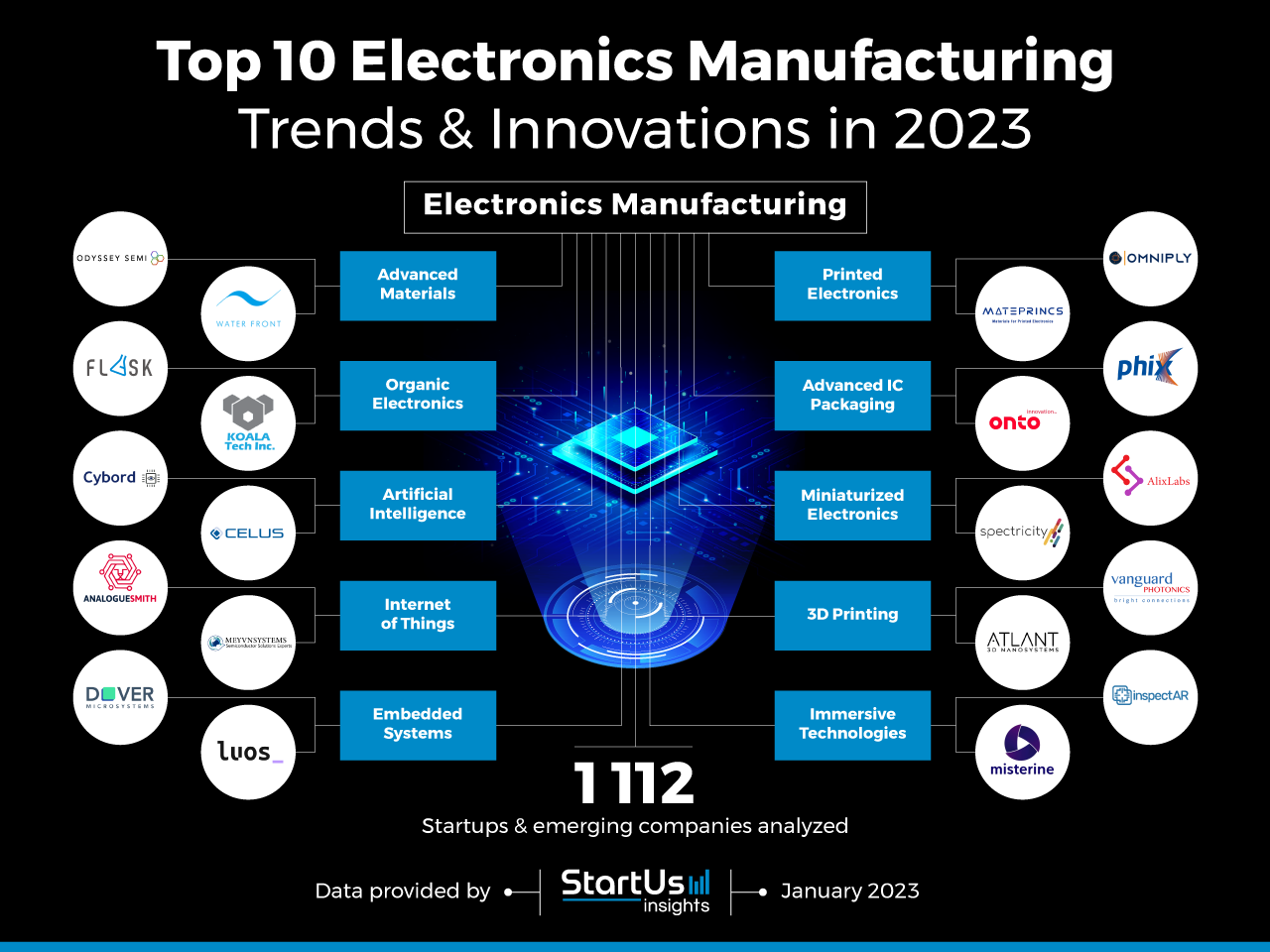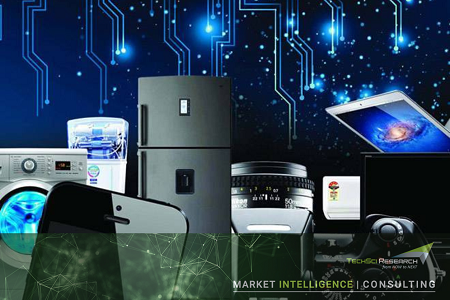Emerging Technologies in Consumer Electronics: Shaping the Future of Technology

The world of consumer electronics is evolving at an unprecedented pace, driven by innovations that blend artificial intelligence (AI), Internet of Things (IoT), and other cutting-edge technologies. These advancements are not only transforming the way we live but are also reshaping industries, from healthcare to entertainment. In this article, we will delve into the emerging technologies in consumer electronics, explore how they are revolutionizing user experiences, and provide insights into what the future holds for this dynamic sector.
1. Artificial Intelligence (AI) in Consumer Electronics
Artificial intelligence (AI) has already begun playing a crucial role in the consumer electronics industry, enhancing device functionality and providing a more personalized user experience. Whether it’s smartphones, smart speakers, or wearable devices, AI is empowering consumers to interact with their gadgets in more intuitive ways.
Key Applications of AI in Consumer Electronics
- Voice Assistants: AI-powered voice assistants like Amazon’s Alexa, Apple’s Siri, and Google Assistant are integrated into smart home devices, helping users control everything from lighting to security systems through voice commands.
- Smartphones: AI optimizes various functions in smartphones, including camera quality, battery usage, and user experience. AI-driven photo enhancement and portrait modes have revolutionized mobile photography, enabling users to capture professional-quality photos without needing advanced skills.
- Wearable Technology: Devices like smartwatches and fitness trackers use AI to monitor health metrics such as heart rate, sleep patterns, and physical activity, offering actionable insights to users to improve their well-being.

Benefits of AI in Consumer Electronics
- Personalization: AI learns from user behavior to offer personalized recommendations and experiences.
- Efficiency: AI optimizes device performance, extending battery life, and ensuring seamless operation.
- Automation: AI enhances the automation of tasks, making consumer devices smarter and more intuitive.
2. The Rise of 5G Connectivity
5G is the next generation of wireless technology, offering significantly faster speeds and more reliable connections than previous generations. As 5G networks continue to expand, they will bring about a new wave of innovations in consumer electronics.
How 5G is Changing Consumer Electronics
- Faster Internet Speeds: 5G will allow for instantaneous downloads and ultra-fast streaming, revolutionizing experiences on smartphones, tablets, and smart TVs.
- Enhanced IoT Capabilities: With the proliferation of IoT devices, 5G’s low latency and high bandwidth will enable more devices to communicate with each other seamlessly, resulting in smarter homes and cities.
- Virtual and Augmented Reality: The speed and low latency of 5G will also improve the performance of VR and AR applications, creating more immersive experiences for users.
Challenges of 5G Adoption
- Infrastructure: The rollout of 5G requires significant investments in infrastructure, which could take time to fully implement globally.
- Device Compatibility: Consumers will need 5G-compatible devices to take full advantage of this technology, driving demand for the latest smartphones, wearables, and other connected gadgets.
3. The Internet of Things (IoT) and Smart Homes
The Internet of Things (IoT) is rapidly transforming how we interact with everyday objects. By connecting devices to the internet and enabling them to communicate with each other, IoT is making our homes smarter, more efficient, and more secure.
Key IoT Applications in Consumer Electronics
- Smart Thermostats: Devices like Nest and Ecobee allow users to control their home’s temperature remotely, saving energy and providing comfort.
- Smart Lighting: With IoT-powered lighting systems, users can control the brightness and color of their lights via smartphones or voice assistants, creating customized lighting setups for any occasion.
- Security Systems: Smart security cameras, doorbells, and alarms allow users to monitor their homes in real-time, receiving instant notifications of any unusual activity.

Benefits of IoT in Consumer Electronics
- Convenience: IoT-connected devices make everyday tasks more convenient, from adjusting the thermostat remotely to automating home security.
- Efficiency: IoT helps to optimize energy usage, reduce waste, and create smarter homes.
- Enhanced Security: With interconnected devices, consumers can monitor their homes, ensuring greater safety and peace of mind.
4. Foldable and Flexible Displays
One of the most exciting innovations in consumer electronics is the development of foldable and flexible displays. These displays offer new possibilities for mobile devices, wearables, and other electronics.
How Foldable Displays are Changing the Game
- Smartphones: The advent of foldable smartphones like the Samsung Galaxy Z Fold has allowed consumers to experience a combination of tablet-sized screens and traditional smartphones in a single device. This flexibility provides greater versatility for multitasking and media consumption.
- Wearables: Flexible displays are also making their way into wearables, enabling manufacturers to create smartwatches with more expansive screens that retain the comfort and practicality of traditional designs.
- Televisions: The future of TVs may include foldable and flexible screens, allowing for designs that are thinner, lighter, and more adaptable to different spaces.
Benefits of Foldable and Flexible Displays
- Portability: Foldable screens offer the advantage of portability without sacrificing screen size, providing users with larger displays in a more compact form.
- Durability: The flexible nature of these displays makes them more resistant to damage from drops or bending compared to traditional screens.
- Innovation: These displays represent the next frontier in consumer electronics design, pushing boundaries and enabling new product forms.
5. Virtual Reality (VR) and Augmented Reality (AR)
Virtual and augmented reality (VR/AR) technologies are among the most immersive innovations in consumer electronics. While VR immerses users in entirely virtual environments, AR enhances the real world with digital information and interactive elements.
Applications of VR and AR in Consumer Electronics
- Gaming: VR has revolutionized gaming, offering players immersive experiences that place them directly inside the game world.
- Education and Training: AR and VR are being used for training simulations, such as medical procedures and complex industrial tasks, offering more practical and hands-on learning experiences.
- Retail: AR is transforming the shopping experience, allowing consumers to try on clothes virtually or see how furniture will look in their homes before making a purchase.

Benefits of VR and AR
- Immersion: VR provides an unparalleled sense of immersion, making experiences more interactive and engaging.
- Practicality: AR enhances real-world experiences by providing valuable, context-driven information.
- Innovation: Both VR and AR are pushing the boundaries of what’s possible, creating new industries and redefining traditional experiences.
The Future of Consumer Electronics
As emerging technologies continue to evolve, the future of consumer electronics looks brighter than ever. We can expect even smarter devices, faster connectivity, and more innovative solutions in the years to come.
Trends to Watch Out For
- AI Integration: We’ll continue to see deeper integration of AI in consumer electronics, allowing for even more intuitive and personalized devices.
- Sustainability: With a growing focus on environmental responsibility, manufacturers will develop more sustainable devices, using recyclable materials and energy-efficient components.
- 5G Expansion: As 5G becomes more widely available, we’ll see faster and more reliable connectivity, enabling advancements in IoT, AR/VR, and other emerging technologies.
FAQs
Q1: What are the main emerging technologies in consumer electronics?
The main emerging technologies in consumer electronics include AI, 5G connectivity, IoT, foldable displays, and VR/AR.
Q2: How is AI used in consumer electronics?
AI is used in consumer electronics for personalization, voice assistants, smart home automation, and improving device functionality like camera enhancements and battery optimization.
Q3: Will 5G improve the consumer electronics experience?
Yes, 5G will significantly improve the consumer electronics experience by offering faster internet speeds, low latency, and better support for IoT devices, making everything from smart homes to virtual reality smoother.
Conclusion
The landscape of consumer electronics is undergoing a dramatic transformation, thanks to the integration of emerging technologies like AI, 5G, and IoT. These innovations are not only enhancing the functionality of existing devices but also opening the door to new possibilities for consumers. As technology continues to evolve, we can expect smarter, more efficient, and more immersive devices that will
continue to shape the way we live, work, and play.
Stay ahead of the curve and embrace the latest trends in consumer electronics to unlock a world of endless possibilities.

